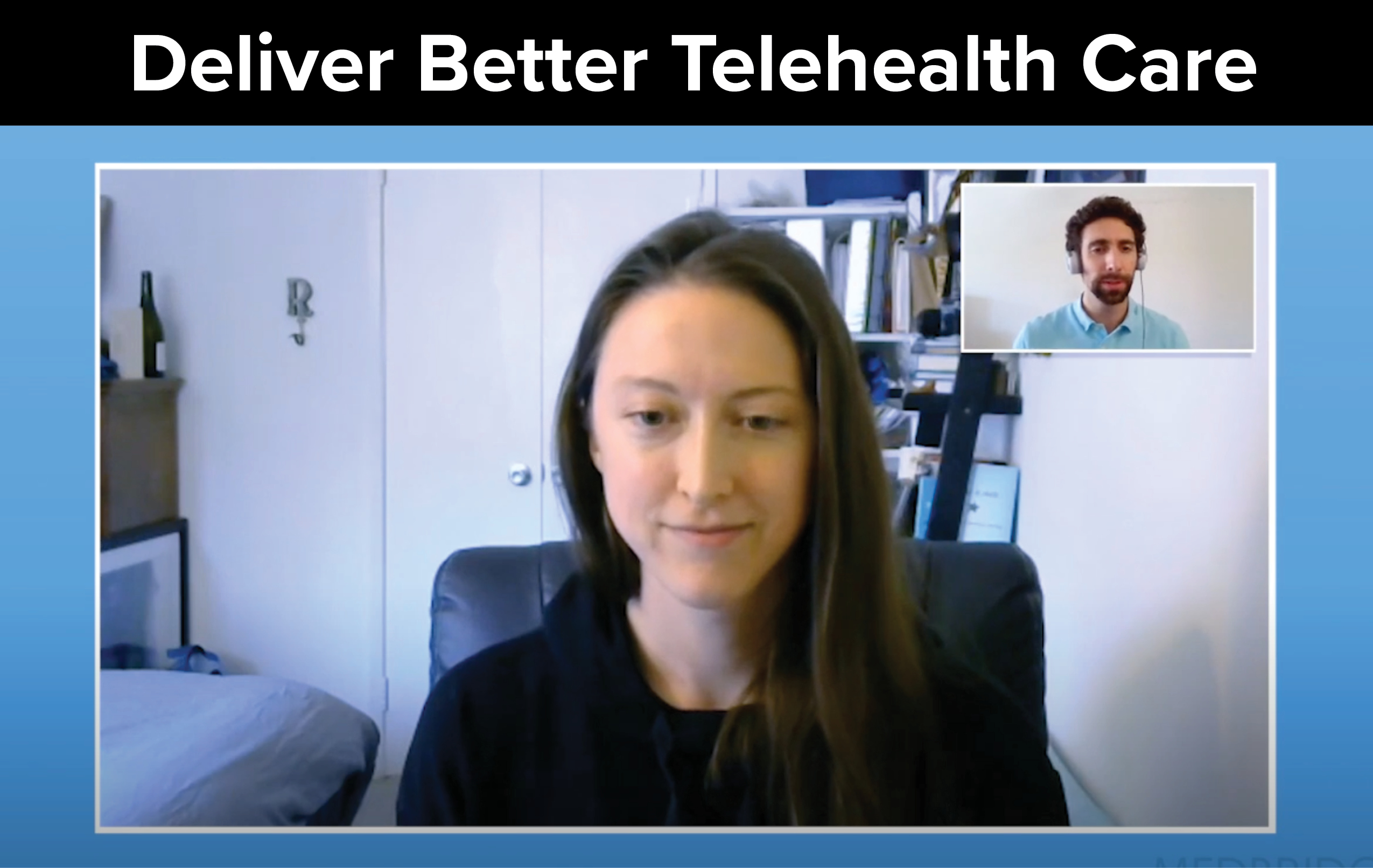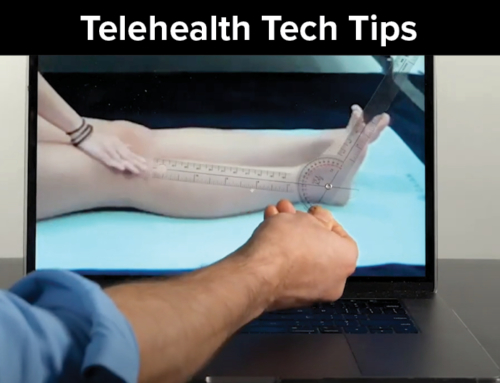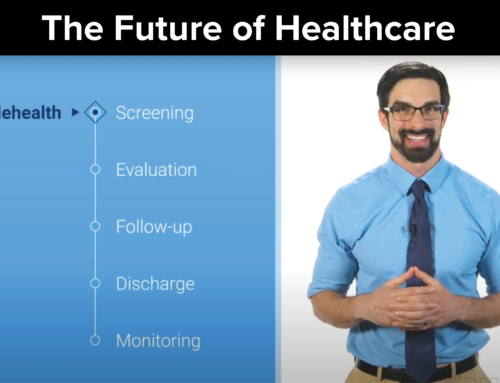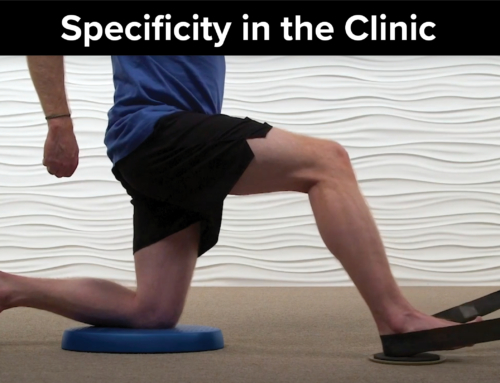Telehealth has come to the forefront as a viable option in this defining moment in health care. Faced with our current public health reality, many clinicians are struggling to transition their years of in-person treatment to virtual care.
Although there are similarities between telehealth care and in-person care, there are also significant differences. Addressing these differences appropriately can minimize clinical challenges and help ensure patient satisfaction.
Most of the challenges that occur while conducting a telehealth visit can be easily circumvented by following three simple tips for delivering virtual care:
- Visually optimize your session
- Prepare for technical challenges
- Build the therapeutic alliance
The key to creating a successful transition for your clients, your staff, and yourself is to identify these three opportunities in your own practice and develop strategies to best prepare for a positive, impactful, and seamless telehealth experience.
Tip #1—Visually Optimize the Session
How you present yourself and how you frame your onscreen image during a telehealth session can mean the difference between a positive and negative care experience for the patient. Make sure that your visual setup is ideal. This includes your environment, lighting, framing, and even the clothes that you wear.
Watch the video below to see examples of poor visual optimizing during a telehealth session and their solutions.[youtube v=”ZGgB2fQJaWk”]
Environment
How you set up your environment is key to creating a professional telehealth session and ensuring patient privacy:
- Conduct your sessions in a private room.
- Always keep sensitive patient information out of view.
- Remove clutter and distractions from your background.
If you are having trouble on any of these points, experiment with different ways to obscure your background:
- Hang curtains or a backdrop.
- Use a standing divider or a tabletop screen.
- Integrate a digital background.
Lighting
Lighting is important for both the clinician and the patient. For the clinician, proper lighting has been shown to contribute to the social success of clinical encounters, and improved lighting increases patient satisfaction.1 When patients have poor lighting, the clinician may find it difficult to identify nonverbal facial cues and appropriately observe and assess patient movement.
Evaluate your lighting:
- Balance your lighting as needed.
- Use a front light that clearly shows your face and ensure that you are not backlit.
- Use natural light or daylight bulbs.
Framing the Face and Body
Framing yourself as a clinician is easy—just make sure that you are in the center of the screen and that the patient can see your entire face. Framing the patient is more of a challenge.
Since the video feed during a telehealth session serves as your eyes, you need to see the patient’s face during a subjective exam in order to observe nonverbal cues. In an ideal situation, patients have the flexibility to easily change their set up so that you can view different parts of the body during a clinical exam. While this may not always be possible, there are some things you can suggest that may help.
For example, imagine that you are performing a movement analysis of your patient flexing his or her shoulder, but the camera device is angled, tilted, in landscape mode, or too far away. Clearly, that can affect your result.
Below are a few framing options that can be used by both the clinician and the patient:
- Adjust the orientation, angle, and distance of the device to optimize positioning.
- Determine whether landscape or portrait mode is the most helpful for your particular scenario.
- Stack books under the device to adjust its height rather than tilting the screen.
- Move the device forward or back to size yourself in the screen.
An important note when framing is to know where your own camera’s lens is and then move your patient’s video feed close to it on your screen so that when you make eye contact with your patient, it looks like you are looking directly at them. For example, if you are using a laptop with a camera on top of the monitor, move your patient’s video feed to the top of your screen, and move your electronic medical record and other windows to the bottom.
Clothing
There is a tendency for clinicians who are providing telehealth services from home to dress more casually than they would in an office setting. Some clinicians even choose professional dress for the upper body but wear pajamas on the lower body! However, be aware that you never know when a patient may ask you to stand up and demonstrate an exercise, so always be prepared.
Dress just like you normally would when you deliver in-person care. Since many patients participate in telehealth sessions in the comfort of their home, they too may forget to dress in treatment-appropriate attire and may need reminders to wear clothing that exposes pertinent body regions that you are assessing or treating.
Download the following resource so that both you and your patients can visually optimize your setup prior to the visit.
Tip #2—Prepare for Technical Challenges
When practicing patient care using telehealth, it is important to recognize that not every session will run smoothly. There will likely be technology challenges, often related to audio or video. Testing your setup and educating your patients on how to do the same prior to the session will avoid many of the issues that can arise.
The following video depicts a typical patient-and-clinician audio problem—and solution—during a telehealth session.
[youtube v=”GqjrVIpwzak”]
If your patient can’t hear you or you can’t hear your patient, you are having audio problems, and there are five steps that fix most of these audio issues. Test your audio prior to the visit and encourage your patients to do the same. This will prevent having to follow these steps during a live telehealth session.
Troubleshooting five common audio issues:
- Make sure your audio device is turned on.
- Confirm that your computer recognizes the device.
- Confirm the telehealth platform recognizes the device.
- Make sure you are not muted in the platform.
- Turn up the volume on your audio device.
Another common technology problem is the video feed. If the video feed has poor quality, cuts in and out, or is choppy, both you and your patient can follow these five steps to maximize internet signal stability.
Troubleshooting five common video issues:
- Move closer to your router.
- Close other programs on your device.
- Turn off other nearby devices.
- Pause program syncing. Google Drive, Dropbox, iCloud, and many other applications can update themselves, syncing data to your computer or cloud storage, which can disrupt your video signal.
- Change the type of connection. If you are using wired internet, try switching to Wi-Fi. If you are using Wi-Fi, try switching to a cellular hotspot.
Download the following resource so that both you and your patients can optimize audio and video setups prior to the visit.
Tip #3—Build the Therapeutic Alliance
The therapeutic alliance is the relationship between a healthcare professional and their patient. Since telehealth is delivered in the virtual environment, strong patient rapport is essential to building the therapeutic alliance. Research has shown that better patient rapport does several things:2
- It improves the accuracy of the patient’s history, which is particularly important in telehealth since your subjective exam may be weighted more than your objective exam.
- It improves patient adherence, which is also important in telehealth since it is an active model that relies entirely on patient participation.
- It improves patient satisfaction. Patients may have initial resistance to telehealth, but the more satisfied they are, the more likely they are to continue their visits.
Watch the following video clip to see an example of bad rapport during a telehealth session.
[youtube v=”SJIksAgvPA8″]
Below are a few research-based actions to improve the therapeutic alliance:
- Use typical face-to-face communication skills.3
- Utilize more non-verbal communication.4
- Use visual aids.3
- Have a back-up plan for technical challenges5.
- Offer a practice session.5
- Type quietly when documenting.4
- Strive for an informal and engaging, yet professional, communication style.6
- Minimize distractions.
Transitioning from in-person care to telehealth care will offer its challenges. Use the three tips from this article, the sample videos, and the downloadable PDFs as resources to provide a positive telehealth experience for your patients. You may be surprised to discover that, in many cases, telehealth can be as effective as in-person patient care.
Author
About Jared Vagy, PT, DPT, OCS, CSCS

Dr. Vagy received his Doctorate in Physical Therapy (DPT) from the University of Southern California (USC). He has completed a one-year residency in orthopedics and a one-year fellowship in movement science. Dr. Vagy is a Clinical Assistant Professor of Physical Therapy in the DPT program at USC. He has published three books and numerous articles on injury prevention. Dr. Vagy delivers lectures and seminars internationally on the topic of The Movement System. He is an orthopedic clinical specialist and a certified strength and conditioning specialist.
Dr. Vagy has served as a physical therapist in China for the Chinese National Track and Field Team, worked with USA Track and Field at the Olympic Team Trials, completed a rotation at the US Olympic Training Center working primarily with USA Men’s gymnastics, and provided medical care at international events such as the International Weightlifting Federation World Championships. He has rehabilitated several world champions, gold medalists, and Olympic athletes. His assessments and treatments are rooted deeply in an understanding of The Movement System.
References
- MacAllister, L., Zimring, C., & Ryherd, E. (2016). Environmental variables that influence patient satisfaction: a review of the literature. Health Environments Research and Design Journal, 10(1), 155–69.
- Barnett, P. B. (2001). Rapport and the hospitalist. American Journal of Medicine, 111(9B), 31S–35S.
- Sabesan, S., Allen, D., Caldwell, P., Loh, P. K., Mozer, R., Komesaroff, P. A., & Talman, P., et al. (2014). Practical aspects of telehealth: doctor-patient relationship and communication. Internal Medicine Journal, 44(1), 101–3.
- Goldstein, F. & Glueck, D. (2016). Developing rapport and therapeutic alliance during telemental health sessions with children and adolescents. Journal of Child and Adolescent Psychopharmacology, 26(3), 204–11.
- Lopez, A., Schwenk, S., Schneck, C. D., Griffin, R. J., & Mishkind, M. C. (2019). Technology-based mental health treatment and the impact on the therapeutic alliance. Current Psychiatry Reports, 21, 76.
- Kairy, D., Tousignant, M., Leclerc, N., Côté, A.-M., & Levasseur, M. (2013). The patient’s perspective of in-home telerehabilitation physiotherapy services following total knee arthroplasty. International Journal of Environmental Research and Public Health, 10(9), 3998–4011.
- The original article and associated course can be found on the Medbridge blog page at this link: Click here









Leave A Comment